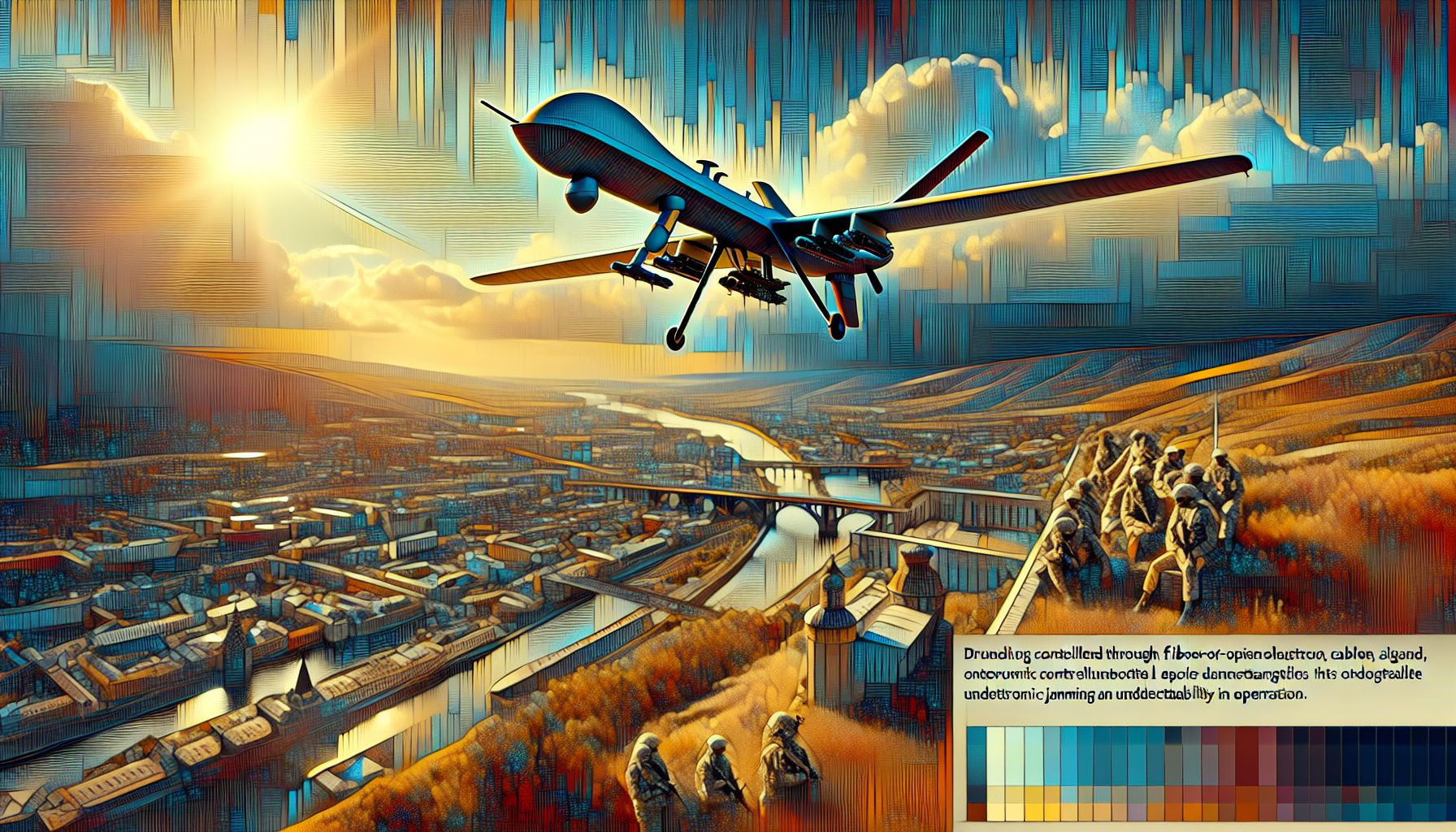Russia's Fiber-Optic Drones: A Game-Changer in Electronic Warfare

Netherlands, Monday, 26 August 2024.
Russia deploys innovative drones using fiber-optic cables for control, making them immune to electronic jamming. This technology, first used in combat in Kursk, offers high-resolution video and undetectable operation, potentially shifting the balance in drone warfare.
Introduction to Fiber-Optic Technology in Drones
The introduction of fiber-optic cables in drone technology marks a significant shift in the landscape of military and commercial UAVs (Unmanned Aerial Vehicles). Unlike traditional drones that rely heavily on radio waves for communication and control, these new drones use fiber-optic cables to transmit signals. This makes them impervious to electronic warfare tactics, which have become a staple in modern military conflicts.
Development and Deployment
The new fiber-optic drone, named ‘Prince Vandal of Novgorod,’ was developed by the Ushkuynik Scientific and Production Center in Novgorod, Russia. This drone was first reported on the military Telegram channel Siberian Army and has since been deployed in combat, most notably in the Kursk region. The development of this technology was a response to the Ukrainian military’s effective electronic warfare tactics, which had previously disrupted Russian reconnaissance and FPV (First-Person View) drones.
Technological Advancements
The use of fiber-optic cables allows for high-resolution video transmission and precise control even in environments saturated with electronic jamming. This is comparable to the technology used in wire-guided missiles, which have been in use for decades. The fiber-optic control system ensures a stable and undetectable connection, significantly enhancing the drone’s operational capabilities.
Global Implications
The implications of this technology extend beyond the battlefield. Skywalker Technology, a company based in Singapore, has already started offering fiber-optic drone controllers for military applications. The commercial availability of such technology indicates a shift in drone capabilities and opens up new possibilities for both military and civilian use.
Challenges and Limitations
Despite its advantages, fiber-optic technology in drones is not without its challenges. The range of the drone is limited by the length of the fiber-optic cable, and the cable itself can be susceptible to damage. Moreover, the operator needs to be relatively close to the target, which increases the risk compared to traditional, radio-controlled drones.
Conclusion
The development of fiber-optic drones by the Ushkuynik Scientific and Production Center represents a significant advancement in drone technology. By overcoming the limitations of electronic warfare, these drones offer a new level of operational capability. As this technology becomes more widespread, it is likely to have far-reaching implications for both military and commercial drone applications.

